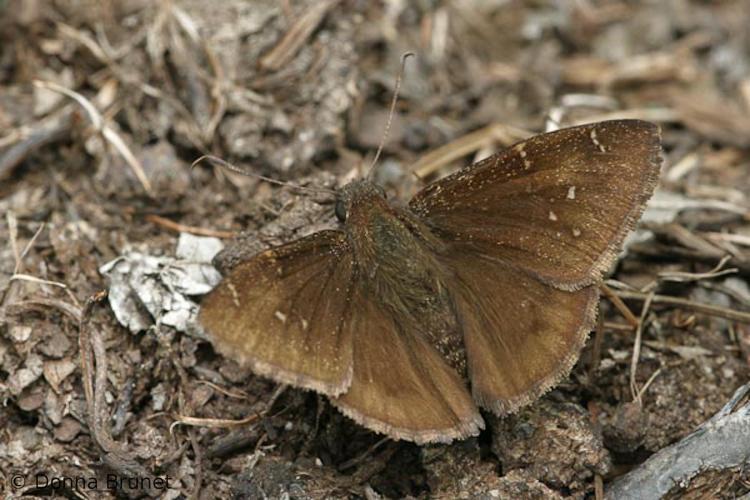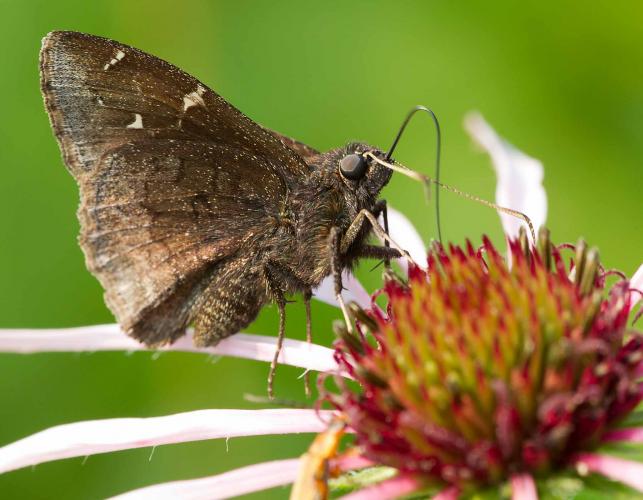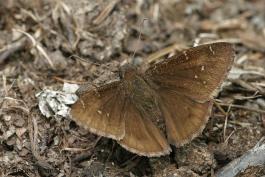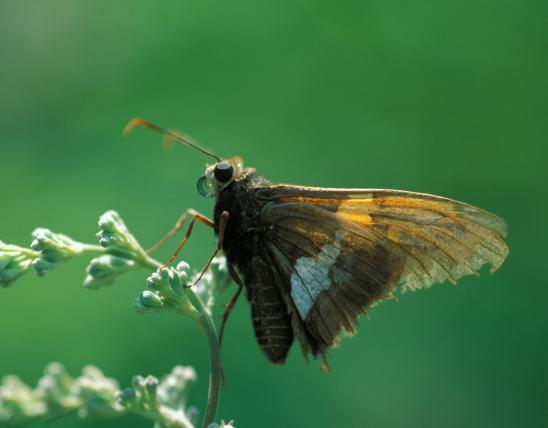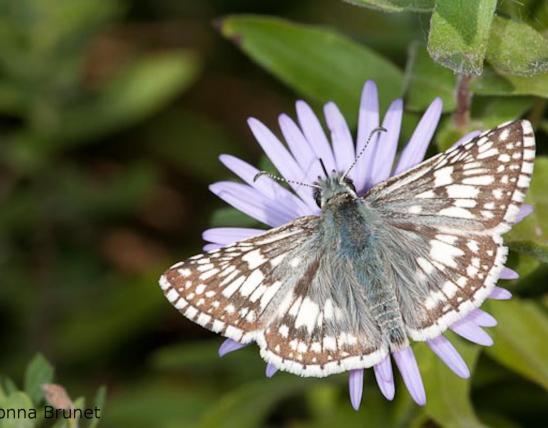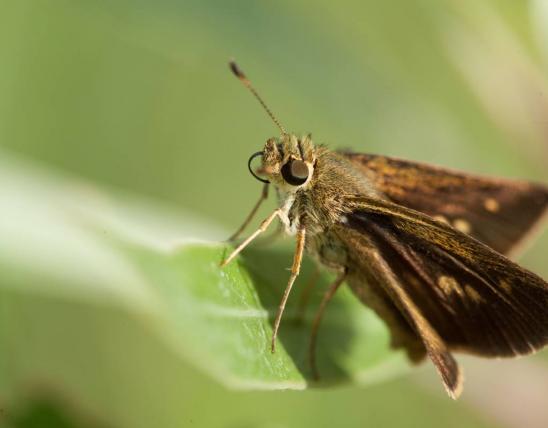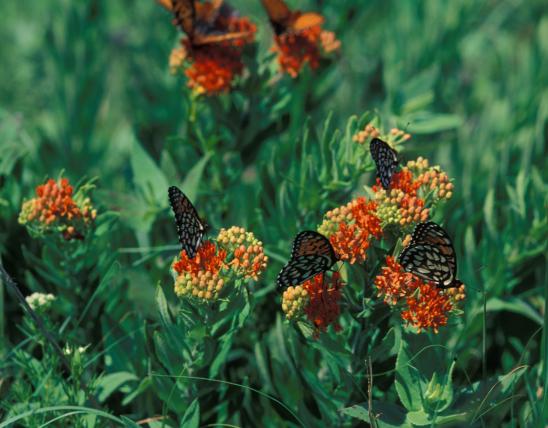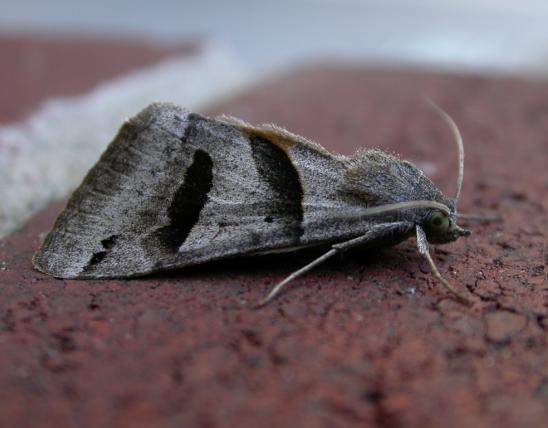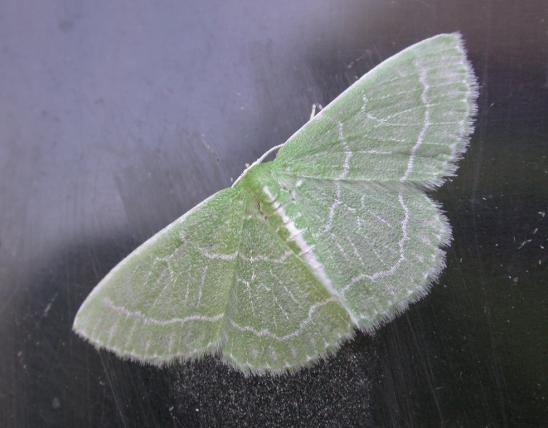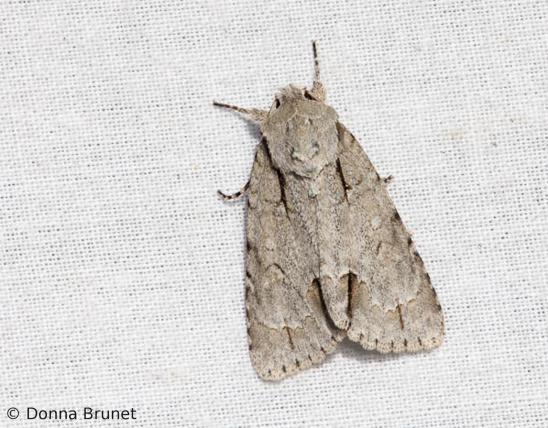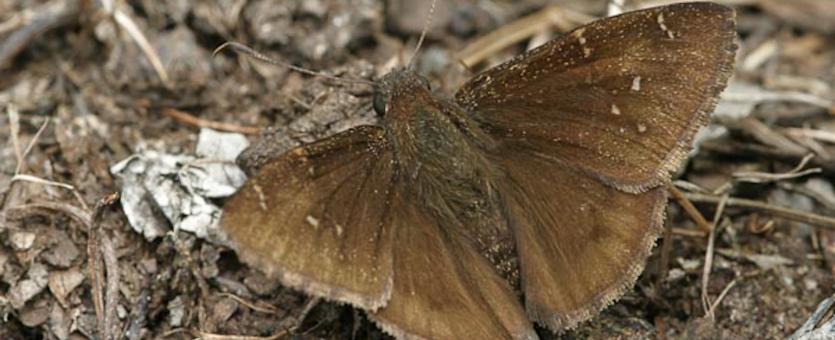
Adult northern cloudywings, like other cloudywing skippers, typically rest with wings spread horizontally, and they are dark brown above and beneath. In this species, the face is dark, and there is no white spot on the antennae. The forewing white spots tend to be small. This is the only Missouri cloudywing in which the adult males have a costal fold (that’s a small folded-over portion on the top side of the leading edge of the forewing; it contains cells that emit pheromones that are important in courtship).
Larvae are green with a darker line running along the back, and with two pinkish lines along the sides. The head is black.
Similar species: Our cloudywings all have a solid brown ground color on the top. Southern cloudywing (T. bathyllus) has a pale gray or whitish face, white at the bend in the antennae, and large white spots on the forewings. Confused cloudywing (T. confusis) is similar to the southern, but it does not have white on the antennae.
Wingspan: 1¼–1¾ inches.
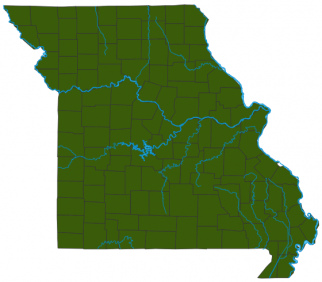
Statewide.
Habitat and Conservation
Flies in forest openings and edges and in brushy, open habitats. It also gathers in numbers at muddy roadsides and in creek beds. Of the three cloudywings in Missouri, this species is most likely to be found in the woods. Males perch on trees and shrubs, darting out at anything flying by that remotely resembles a female of the species.
Food
Larvae feed on the foliage of plants of the bean or pea family — legumes — particularly tick trefoil and bush clover. The adults take nectar from a variety of flowers, especially ones with blue, pink, purple, or white petals.
Status
Breeding resident.
Life Cycle
Adults fly from April through October. Eggs are laid singly beneath the leaves of host plants. Caterpillars live in a silk nest and, like the larvae of the silver-spotted skipper, forcibly eject droppings so they fall far from the nest. This species overwinters as fully grown caterpillars.
Human Connections
For poets worldwide, butterflies and their kin are a source of inspiration and symbols. India’s celebrated poet Rabindranath Tagore wrote, “The butterfly counts not months but moments, and has time enough.”
Ecosystem Connections
The caterpillars are herbivores that graze on vegetation. The adults serve a role in pollination. All stages provide food for predators.
